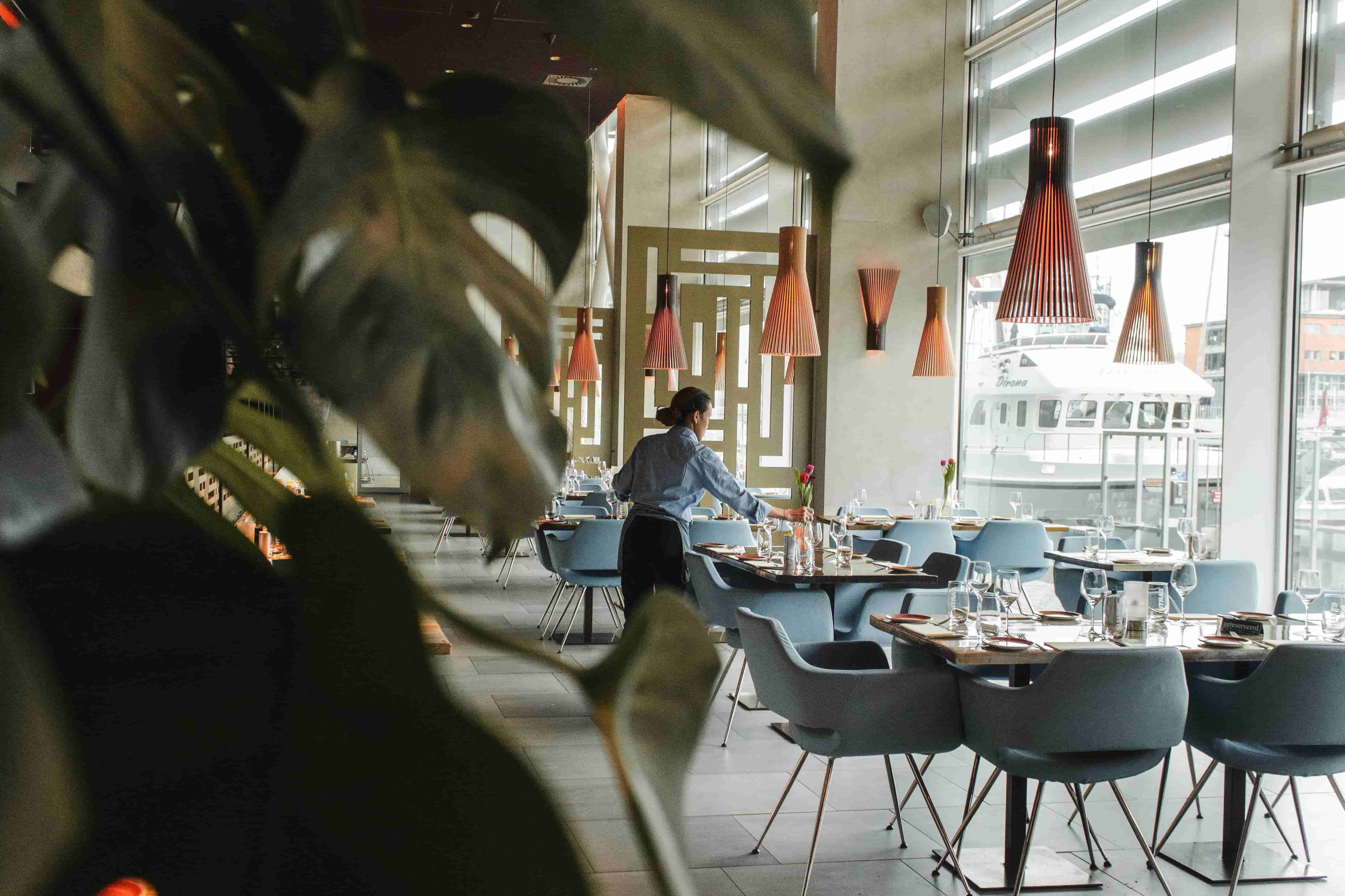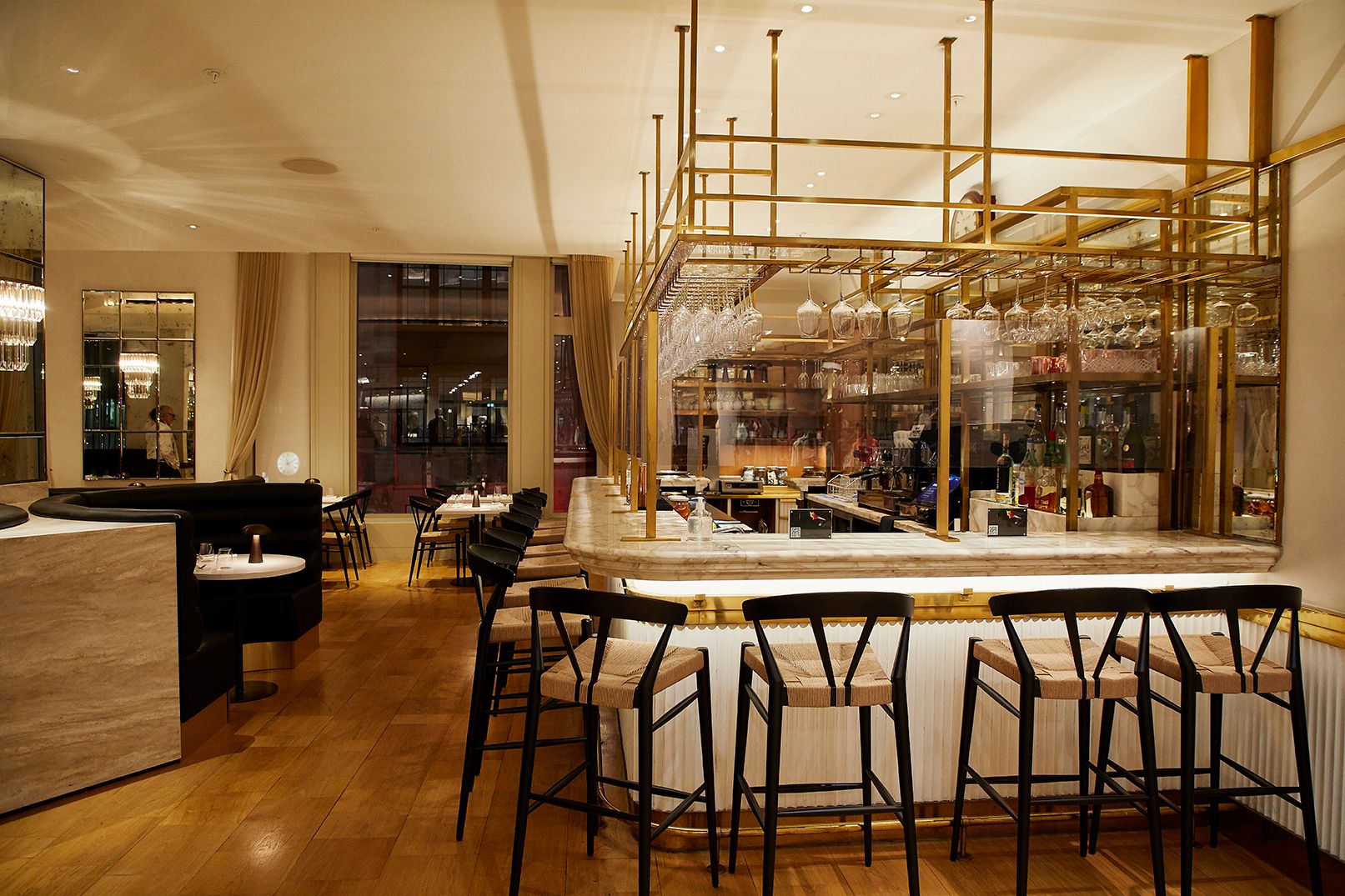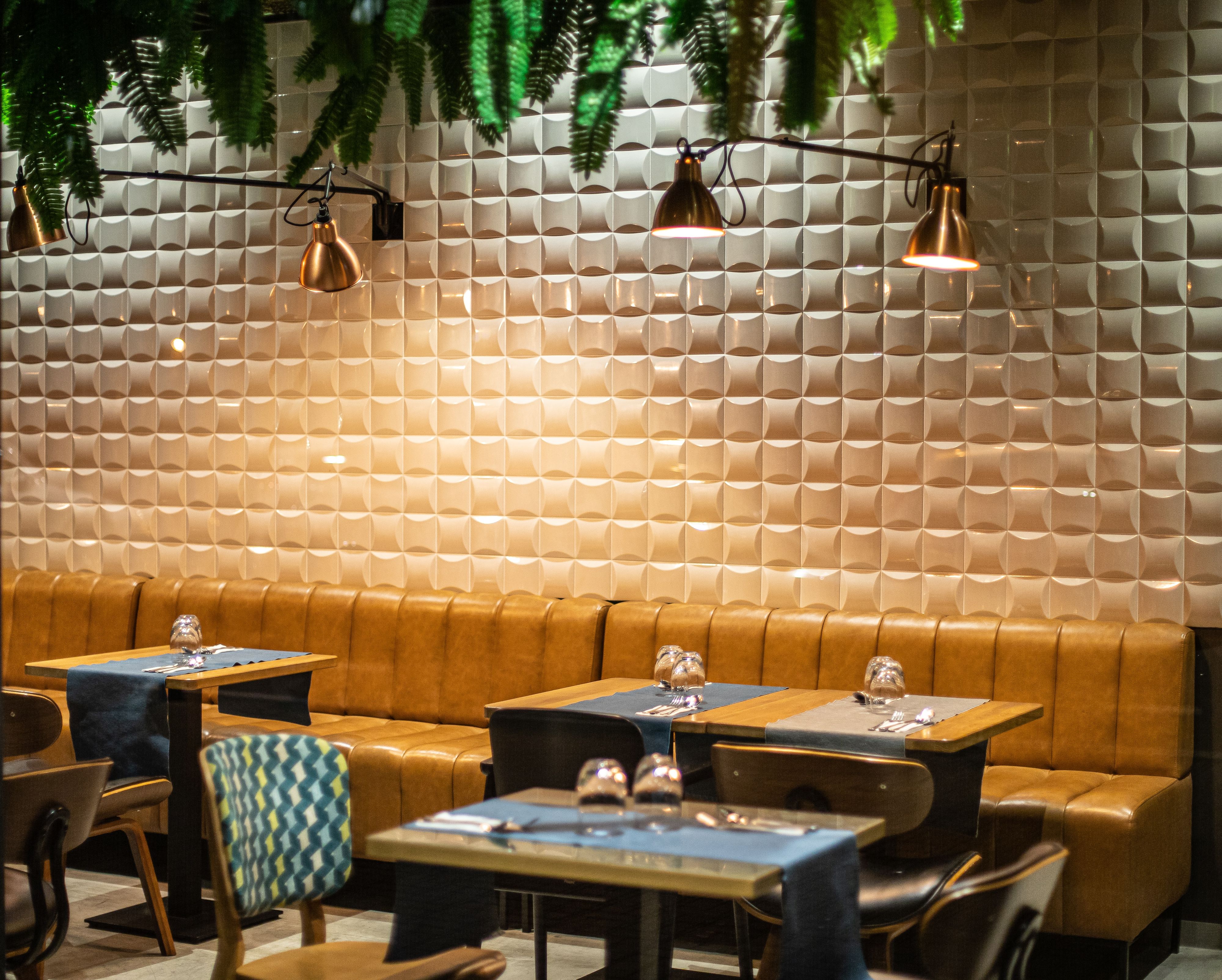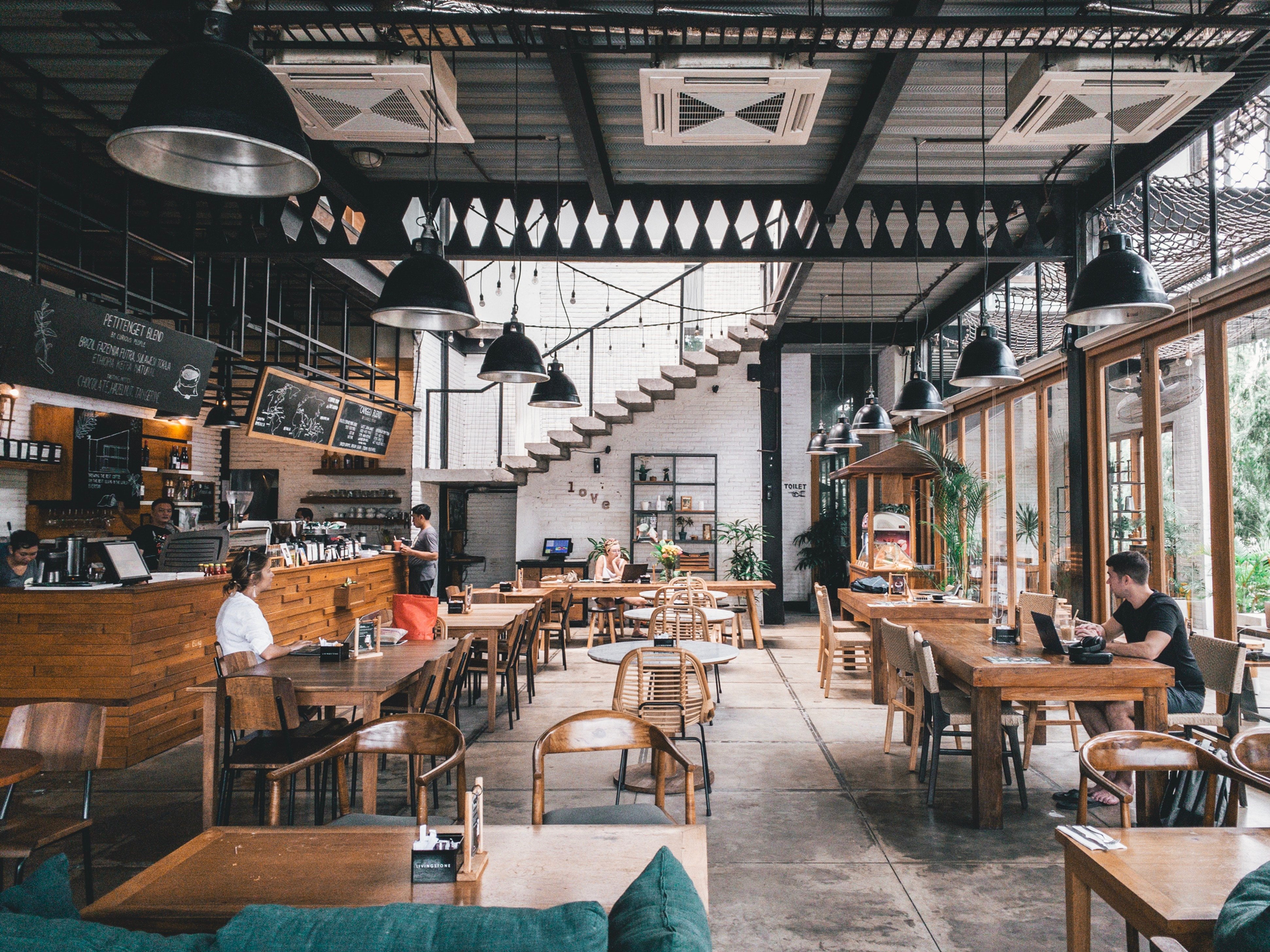Stepping into a fine dining establishment should feel like walking through a door into a different realm or dimension. It should be a soul-soothing, holistic experience, which intrigues the mind and provokes the senses. Whilst back in the day fine dining was associated predominantly with snotty waiters, white tablecloths and too many cutlery to remember, today we are seeing a shift in what is considered “fine”. The concept is more and more associated with the challenge of bringing the ethereal into the carnal world through the mediums of taste and vision.
There are no rules to conceptualising a fine dining restaurant any more, as Claire Richmond, Design Director at TGP International, says: “In the past I would’ve said the service style would be a certain, definitive rule of fine dining. Less about visuals and more about how you’re treated and certain expectations, reverence that comes with it. But I think all of those rules have been broken now.
Is the future about breaking all rules, experimenting? There’s more of a culture of that, it seems Some of it potentially comes from the digital world influencing the physical world, and how quickly the online-sphere influences the day-to-day. People are much more open to experimentation. But everything seems to go in a cycle - maybe there is a cycle of wanting more definition and stricter rules (if we say so) coming back, who knows?"
And yet, there are some unwritten rules for any fine dining restaurant - once they have been considered, the imagination can really be unleashed, to create an atmosphere, which will entice the guests again and again.
1. Decide on the Narrative and Story

Culinary is an art form itself and much like any other art, there needs to be a level of planning involved, before the final masterpiece is created and presented to the eager audience. Only a clear plan and understanding of what are the differentiating factors of the venue will allow for an impeccable execution.
In the same way that an artist would not open a gallery exhibition without a clear plan of how each of the pieces are presented and a storyline to entwine them all, opening a fine-dining restaurant carries a lot of creative responsibility.
The story is everything, it will lead the conceptual design, it will be reflected in the little details, it will be hidden in the cultivated surprises that await for the guest from the moment they walk through the door.
A fine dining restaurant should know what it is, what purpose it serves, why it exists on the world’s food scene. Only when the establishment itself knows the answers, will the public be convinced to believe and retell the story.
“It’s very much the way restaurants should be designed - because of their offering and the way it manifests itself in a 3Dor 4D way. The guests need to be aware of the story (the offer) - they need to be comfortable with it, and that story needs to give a hint at what the food is going to be like. - adds Gabriel Murray, TGP’s Creative Director.
The story, idea behind the restaurant comes from the food itself. It has to do with the ingredients in focus, the elements being explored. Once this is established, then the restaurant will be the visual manifestation of that.”
2. The Operational Perspective is Key

Planning and deciding on the concept of a fine dining restaurant is likely the easier part of defining the interior. However, a stand-out restaurant interior is equally dependent on its immaculately executed operational efficiency.
From the positioning of the restaurant on the high-street or at it’s own area (how will guest arrive and find the place?), to the delivery route of the food between the kitchen and the table - it is all part of a master operational strategy.
Simply put, as visually-appealing as a restaurant is, if it doesn’t serve its primary purpose - to deliver a satisfying dining experience to the guests, then success will never follow.
Some of the unwritten rules of fine-dining interior design from operational perspective are:
- The dining area should take about 60% of the space, with all other parts, such as kitchen, storage, and restrooms being allotted the remaining 40%.
- There should be sufficient spacing between the tables to allow for comfortable movement of the patrons. Consider ladies’ dresses, which should never touch the surrounding tables, as well as the potential of having to make space for food trolleys, Champagne ice buckets etc. The general rule is that 20 sq feet per person is ideal for a fine-dining establishment/
- Diners should not be blocked by columns, panels and other furniture where possible. This benefits both the guests and the staff, as every need can be spotted quickly. If the purpose of the space is to offer privacy then the staff should be trained specifically to be more attentive in a natural way.
- Connectivity between the backend and frontend is key - there should be smooth movement from the pantry or storage to the kitchen and from the kitchen to the dining table. If the space is not planned carefully, it can lead to delays in food preparation and service, which will negatively impact the overall experience.
3. The Matter of Restrooms

Restrooms are one of those elements of interior design, which are, perhaps not talked about much, but can have a striking impact on the functionality of a venue.
As a rule, restrooms should be easy to find without having to ask the staff about location. This can be achieved through clues in the interior design, and inoffensive labelling.
They should never be located too close to the dining area, and there shouldn’t be any tables which are directly on the way to the restrooms, as this can cause distraction to the guests seated there. Locating the restroom near the kitchen is a big no as well - although naturally there won’t be any interaction between those spaces, the customers might make a psychological connection between the two, perceiving the hygiene of the venue to be at a lower level.
4. Soft, Natural Interiors

Although, as we said earlier, rules are made to be broken, especially in today’s fine dining world, there is still expectation for softer, natural interiors and ambient setting.
This is not to say that a very bold, bright and loud concept would not be successful, though fine dining usually caters to the whole experience of relaxing the senses in order to open them up to a higher level of perception. The search of an elevated epicurean escapade could be somewhat grounded by an overwhelming environment.
From a psychological point of view busy colours make people leave, whilst softer colours and relaxing surfaces invite them to stay. This is why a fast food chain will have somewhat uncomfortable plastic chairs and bright interiors, whilst lounge bars focus on soft furniture and muted surroundings.
5. The Right Lighting

As continuation of the last point, lighting also plays an important part in fine dining restaurant interior design.
Though we might not often think of the light that surrounds us, it impacts our perceptions in a subtle way. Food presented under the wrong light, which washes away its colours, can immediately look less appealing. The absence of light can also impact diners, as they struggle to cut their food or combine the ingredients for the perfect bite.
A mistake, which is made quite often, is dimming the lights too much. Whilst dimmed light does indeed add to the ambience of a venue, the most simple rule is - guests go to any restaurant, whether fine-dining or not, first to enjoy the food. A lounge or a bar attached to the restaurant, where guests can retreat after the dinner, is perhaps better for this type of moody lighting.
For a fine dining establishment the best advice is to keep the light soft and natural, even if the space is completely enclosed. There should always be plenty of light on the tables, even if the overall dining space focuses on a muted atmosphere. However, be careful of the opposite as well - if the restaurant has plenty of natural light, ensure that on a sunny day the patrons are not having to squint whilst enjoying their food.
6. Ambient Music

Whilst the food and light cater to the visual senses, the music in a venue nurtures the auditory senses.
Music should never be a distraction in a fine dining restaurant. Its purpose is to act as a background and add to the setting, helping to transport the guest in the culinary world they’ll be inhabiting for the next few hours. But the focus should never be the music.
Quiet, non-obtrusive and allowing the guests to converse and delight in their food commentary is the perfect choice of ambient music for fine dining.
7. Focused on Sustainability

Sustainability was never an official requirement for fine dining restaurants, but one will be looking hard to find a praised establishment, which has not adopted it as one of its core values in the last decade.
And it makes so much sense - fine dining has always been focused on featuring products, which are sourced with care, and not produced en-masse. Showcasing the surroundings of the venue, the heritage of the region or the cultural influences of the chef have served as pivotal fine dining points for as long as the concept has existed. It is then no surprise that sustainability naturally transpires in the modern rules of fine dining interior design.
“When we talk about sustainability in interior design, this is something that is manifested through the materials used - eco friendly, reusable, plentiful, in the sense that there is no shortage that’s being created by their use. The local aspect is something that has been running for ages and ages in the restaurant industry but we’re only now paying attention to it, as it has become a good and popular selling point. It’s always preferable to have local products - no respectable chef wants to fly in prawns from Ecuador to the UK. The sourcing of the food and its prominence is important.
From a visual point of view - interiors have been designed to attract the customer, the visual looks and feels reflect the sustainability aspect of it. People nowadays, more than ever are aware and want a dining experience that is encompassing sustainability” adds Gabriel.
Once the basic rules of fine dining interior design are met, one is free to improvise and bring their character into the venue. An exceptional interior designer will think of “immersive interior design”, as Gabriel explains.
Restaurants nowadays are not just themed, they’re immersive - we are starting to talk about “transportative dining”. The experience that takes us out of the norm, encourages us to dive into a dining venture that is not simply driven by where the food is from, but it is inspired by the category of the food.”
TGP International’s interior design experts specialise in bringing creative restaurant concepts to life. We bring passion and expertise to your vision and create breathtaking spaces that your customers will love.
-1.png?width=3330&height=698&name=TGP%20International%20Logo%20White%20(1)-1.png)

